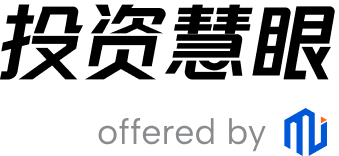Uber seeks funds to expand robotaxi business on optimistic Q3 projections
Uber Technologies Inc.’s CEO Dara Khosrowshahi revealed that the company is in active engagements with private equity firms and banks to secure funding for its growing robotaxi business just as the firm revealed optimistic Q3 predictions.
Speaking on Wednesday, Khosrowshahi outlined a multi-pronged strategy for expanding its robotaxi operations through both partnerships and internal investment. Currently, Uber offers robotaxi rides in Austin and Atlanta via a partnership with Waymo, the self-driving division of Alphabet Inc.
Uber’s Q3 forecast
In July, Uber struck a major $300M deal with the electric vehicle maker Lucid and the autonomous tech startup Nuro to deploy over 20,000 self-driving vehicles over the period of six years.
Khosrowshahi described Uber’s approach as built on paying partners a fixed rate to use their vehicles, sharing revenue with fleet operators, and owning the vehicles while licensing third-party self-driving software. The CEO emphasized that once Uber demonstrates reliable daily revenue from robotaxis, external financing will follow.
“We are talking to private equity players, we have talked to banks,” he said. “Once we prove the revenue model… there will be plenty of financing to go around.”
Uber plans to allocate a modest portion of its $7B in annual cash flow to fund initial deployments. The company is also open to selling minority stakes in its autonomous operations to help accelerate growth.
Industry analysts believe that a successful robotaxi deployment could dramatically lower Uber’s labor-related operating costs and boost long-term profitability.
Tesla, Waymo, and others are racing to capture market share, with Tesla launching a robotaxi service in Austin in June and expanding into the Bay Area in July. Waymo currently operates in five major U.S. cities, including San Francisco.
Uber, however, says it has not observed any decline in demand in Austin or San Francisco since Tesla’s entry.
“To a lot of these companies, it does seem this will be a worthwhile endeavor,” Ken Mahoney, the CEO of Mahoney Asset Management said.
Uber initiates $20B buyback
On Wednesday, Uber announced a $20B stock buyback program. This follows a $7B buyback authorization from early 2024.
Much of this optimism in the company is driven by the continued success of Uber One, the company’s paid membership program priced at $9.99 per month. Membership surged 60% year-over-year in June, hitting over 36 million users.
These customers account for more than one-third of total bookings and generate triple the profit of single-service users.
To further boost adoption, Uber launched a week-long promotional event in May, offering discounted rides, food delivery, and grocery services. The campaign added half a million new Uber One members in just one week.
Uber now expects third-quarter gross bookings to come in between $48.25B and $49.75B, significantly above the $47.3B prediction from Wall Street, according to data from LSEG. This follows a strong second quarter where gross bookings jumped 18.2%, driven by 24.6% growth in delivery and 18.8% growth in mobility.
Increased weekday commuting contributed to Q2 gains. Uber noted that its users of its $2.99/month “Price Lock Pass” took over six extra trips monthly on average. The pass is now available in over 10 major cities across the U.S. and Brazil.
Uber reported Q2 net income of 63 cents per share, up from 47 cents in the same period last year, which is in line with analyst expectations. The adjusted core profit guidance for the current quarter is between $2.19B and $2.29B, exceeding the average analyst estimate of $2.22.
Both Uber and rival Lyft are under pressure to innovate and maintain growth. Uber is betting that expanding its high-margin loyalty program, investing in habit-forming products like Price Lock, and forging ahead with robotaxi partnerships will set it apart in the industry.
The company now has more than 20 strategic alliances in the autonomous driving space.
Want your project in front of crypto’s top minds? Feature it in our next industry report, where data meets impact.



